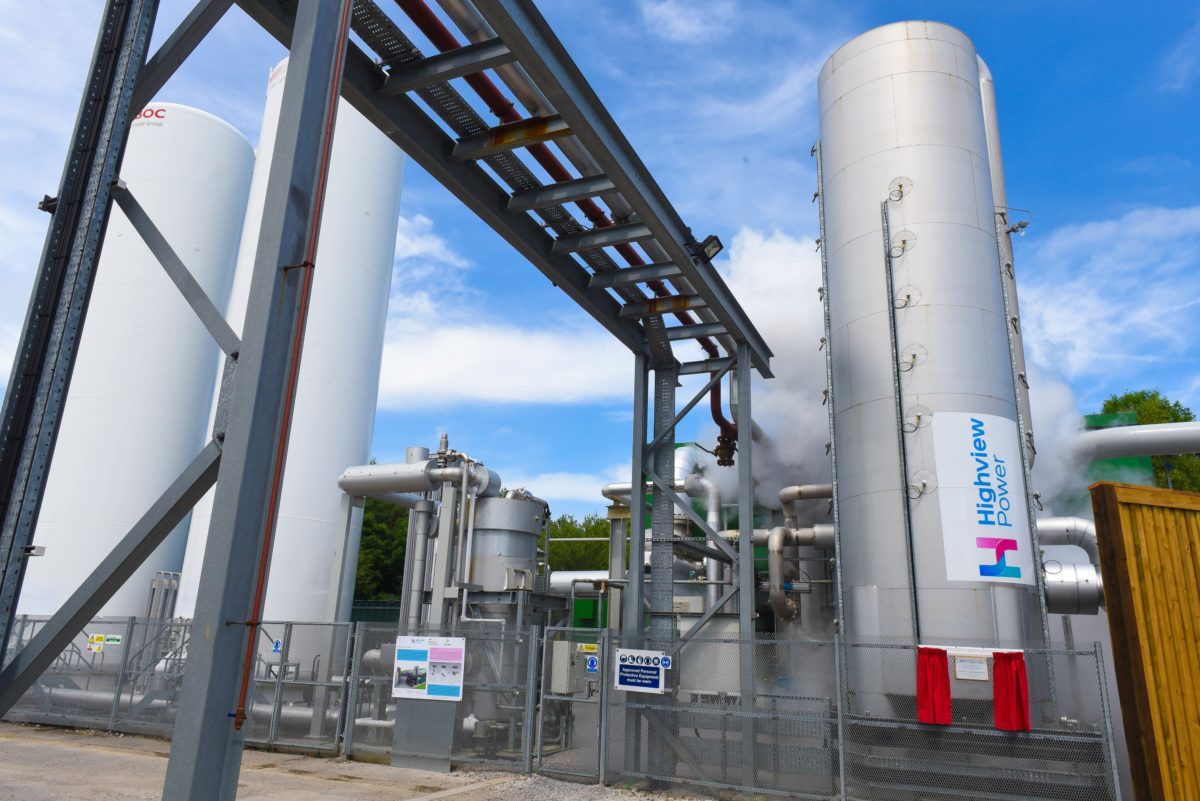London-based Highview Power uses liquid air to store energy for far longer than lithium-ion batteries and plans to develop the United States’ first long-duration, liquid-air energy storage system in northern Vermont. It’s intended to be sized at a minimum of 50 MW with more than eight hours of storage for in excess of 400 MWh.
Balancing an intermittent renewables-dominated grid replete with duck curves and periods of under- and over-production is going to require a greater-duration storage method than the 4 hours that today’s lithium-ion batteries typically provide.
As pv magazine’s Will Driscoll reported, Highview uses off-peak or excess electricity to chill and liquefy air at -320°F, storing the liquid air in insulated, low-pressure tanks, and then exposing the liquid air to ambient temperatures to rapidly re-gasify the air, expanding it to 700 times its liquid volume and powering turbines to generate electricity. Highview notes that its system can be configured to also use waste heat and cold.
Cheaper than batteries?
Highview will co-develop the long-duration energy storage project with Encore Renewable Energy, a Vermont-based clean energy developer with a history of reclaiming real estate landfills, brownfields, rooftops and carports for community-scale solar PV and large-scale energy storage systems.
The storage startup has claimed that the levelized cost for its system is $140/MWh for a 200 MW/2 GWh (10-hour) system, with no use of waste heat or cold. The firm adds that its technology permits “weeks’ worth of storage,” with the use of additional tanks.
Highview sees ERCOT as a promising market because it is “a big wind market—we can co-locate with wind resources to store power during off-peak hours,” said Javier Cavada, president and CEO of Highview Power, in a pv magazine interview.
The cryogenic energy storage technology can support “intermittent renewable generation, energy arbitrage, peak shaving, ancillary services, transmission and distribution deferral, inertia services, reactive power, and voltage support,” said Cavada.
The Vermont project is intended to help resolve some of the energy transmission challenges with the state’s Sheffield-Highgate Export Interface and enable more efficient transport and integration of excess power from solar and wind.
Chad Farrell, CEO of Encore Renewable Energy, said the cryogenic system “will also allow for fewer curtailments and provide important energy balancing services for the rapidly evolving modern grid.”
An alternative to lithium-ion for longer-duration storage?
Battery plants are not financially viable in providing days or weeks of energy storage.
There is some financing and lots of chatter targeted at longer-duration grid storage such as:
- New pumped hydro storage projects in Montana
- Railcar-based energy storage from Ares
- Mysterious flow battery and electrochemical approaches from Form Energy
- Gravity-based, block-stacking energy storage schemes from Energy Vault
- Hydrostor looking to store energy with compressed air in underground mine shafts
- Gravity Power’s closed-loop, in-ground pumped hydro storage.
But none of these long-duration storage approaches seems to have gotten as close to market as Highview’s cryogenic technology.
This content is protected by copyright and may not be reused. If you want to cooperate with us and would like to reuse some of our content, please contact: editors@pv-magazine.com.








What bothers me is there are so many claims that the renewable energyvsources must be backed up by fossil fuel peaker plants. With the battery and non-battery storage systems, all those fossil fuel plants can be shut down and replaced or retrofitted to become energy storage and supply plants. I hope that there are a lot more pumped hydro plants built because they can be so much bigger than battery or other storage systems.
Aare they really optimisitic, or is 140$/MWh a typo that should be 140$/kWh?
Also, it would be helpful to get a sense and range of expected round trip efficiencies, both by the company and by folks here. Feels Iike there would be a lot of loss from entropic irreversibility.